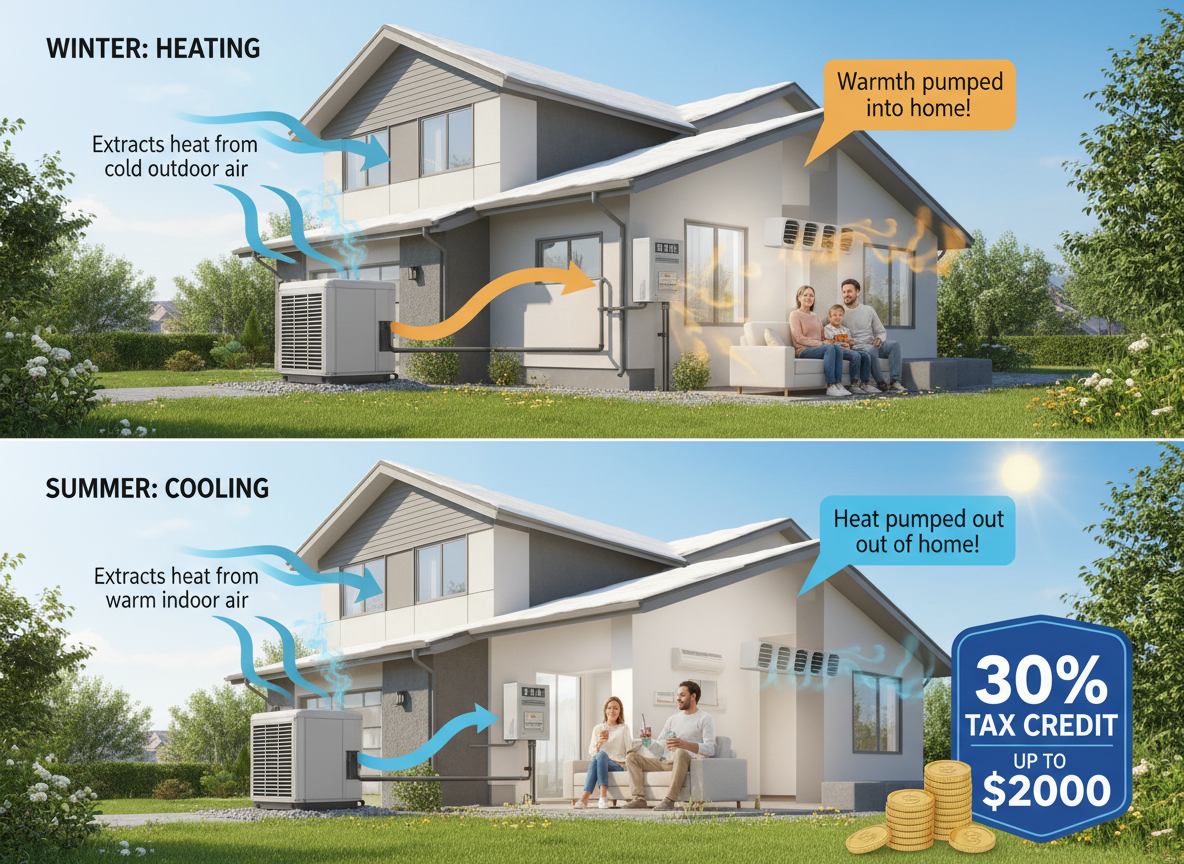
Condenser Components
The AC condenser is a vital component of an air conditioning system, responsible for releasing heat absorbed from indoor spaces into the outdoor environment. Comprising several key parts, the condenser facilitates the crucial process of refrigerant condensation, essential for maintaining comfortable indoor temperatures. From the condenser coil to the compressor and fan assembly, each element plays a significant role in the heat exchange cycle, ensuring efficient cooling performance. Understanding the main parts of your condenser is essential for troubleshooting issues, conducting maintenance, and maximizing the lifespan of the system.
Condenser Coil
This coil is where the hot refrigerant gas released from the compressor condenses into a liquid. It's usually made of copper or aluminum tubing and is surrounded by fins to enhance heat transfer.
If the condenser coil is dirty or clogged with debris, it can inhibit airflow and reduce heat transfer efficiency. This leads to poor condensation of the refrigerant and can cause the system to work harder, leading to higher energy consumption, compressor damage or other air conditioning repairs.
Compressor
The compressor is responsible for pressurizing and circulating the refrigerant throughout the system. It compresses the low-pressure, low-temperature refrigerant vapor into a high-pressure, high-temperature gas, which then flows to the condenser coil.
If the compressor is malfunctioning or not operating efficiently, it can result in inadequate compression of the refrigerant gas. This can lead to reduced heat exchange in the condenser coil, affecting the system's cooling capacity and efficiency. There can also be an issue with the ac capacitor.
Condenser Fan
This fan blows air over the condenser coil to dissipate the heat absorbed by the refrigerant, helping it to condense into a liquid. It's typically located on the outside unit of the AC system.
A faulty condenser fan or motor can result in inadequate airflow over the condenser coil. This can cause the refrigerant to not condense properly, leading to higher operating pressures and temperatures within the system. It can also cause the compressor to overheat and fail prematurely. Depending on the age, you may need to consider AC replacement.
Fan Motor
The fan motor drives the condenser fan, providing the mechanical energy necessary to move air over the condenser coil.
If the fan motor fails, the condenser fan will not operate, leading to reduced airflow over the condenser coil. This can result in higher system pressures, reduced cooling capacity, and potential damage to other components due to overheating.
Condenser Housing
This is the outer casing that encloses the condenser coil, compressor, fan, and other internal components. It protects these components from the elements and provides structural support for the unit.
Damage to the condenser housing can expose internal components to environmental factors such as moisture, debris, and extreme temperatures. This can lead to corrosion, insulation breakdown, and other issues that affect the efficiency and lifespan of the condenser. Another aspect is the possibility for a hard start kit to be installed in order to help the condenser start up and lower the amps.
Refrigerant Lines
These lines connect the condenser unit to the indoor evaporator coil. They transport the refrigerant between the indoor and outdoor units, allowing for the exchange of heat to occur.
Leaks or restrictions in the refrigerant lines can disrupt the flow of refrigerant to and from the condenser, affecting the system's ability to transfer heat effectively. This can lead to improper cooling or heating, increased energy consumption, and potential damage to the compressor.
Reversing Valve (in heat pump systems)
In heat pump systems, a reversing valve is present in the outdoor unit (the condenser) to reverse the flow of refrigerant, allowing the system to switch between heating and cooling modes.
If the reversing valve malfunctions, it can prevent the system from switching between heating and cooling modes effectively. This can lead to inefficient operation and discomfort for the occupants.
Evaporator Coil
The evaporator coil absorbs heat from the indoor air, allowing the refrigerant to evaporate and cool the air. If the evaporator coil is dirty or blocked, it reduces airflow and heat transfer efficiency, affecting the overall performance of the cooling system. This can lead to reduced cooling capacity, increased energy consumption, and potential icing issues.
If the evaporator coil is dirty or blocked, it may struggle to absorb heat efficiently from the indoor air. Addressing issues with the evaporator coil promptly through regular maintenance and repairs can help ensure optimal performance of both the evaporator and condenser coils, thereby maximizing the efficiency and longevity of the air conditioning system.
Contact LA Construction, Heating and Air
The main parts of your condenser work in harmony to maintain optimal cooling performance and efficiency in air conditioning systems. From the condenser coil and compressor to the fan assembly and refrigerant lines, each component plays a crucial role in the heat exchange process that enables the transfer of heat from indoor spaces to the outdoors. Regular maintenance and prompt repairs of these components are essential for ensuring the smooth operation of the condenser and the overall longevity of the AC system. By understanding the functions and importance of each part, homeowners and HVAC professionals can effectively troubleshoot issues and maintain comfortable indoor environments year-round. Give us a call today or contact us online for air conditioning repair services.
Main Parts of Your Condenser Related Posts:






















.png)














